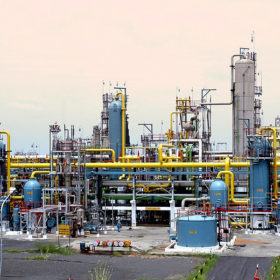ONGC partners Greenko to make green hydrogen
India’s largest crude oil and natural gas company has signed an agreement with renewables major Greenko to undertake renewable energy, green hydrogen, and green ammonia projects jointly.
India must ensure climate finance for cleantech startups
A new report looks at the current status of climate finance for cleantech startups in India. It highlights the opportunities and challenges and presents potential solutions to accelerate climate tech finance in the country.
Trina Solar surpasses 8 GW of PV module shipments to India
The Chinese PV module maker has shipped more than 8 GW of solar panels to India since the start of its operations in the market in 2010.
Triton EV to manufacture hydrogen-run two-wheelers and three-wheelers in India
New Jersey-headquartered Triton Electric Vehicle, which plans to make electric cars in India, will also roll out hydrogen-run two-wheeler and three-wheeler EVs from its plant in Gujarat.
Blackearth JV set to commence construction of India plant
The Australian graphite developer and its 50:50 joint venture partner Metachem have acquired a 5-acre site in Pune for their downstream graphite processing plant.
There’s big money in recycling materials from solar panels
Recycling solar panels keeps them out of landfills, but also provides much-needed raw materials with Rystad Energy projecting a value approaching $80 billion by 2050.
NHPC and DVC to jointly develop pumped hydro storage projects
State-run hydropower producer NHPC Ltd is also entering green hydrogen production. To begin with, it will set up pilot green hydrogen projects in Leh and Kargil districts of the Indian union territory of Ladakh.
Former ReneSola chief now Pennar Industries’ solar modules business head
Hyderabad-headquartered Pennar Industries has appointed ReneSola’s former India head, Pradeep Sangwan, to lead its solar modules business. In his most recent role, Sangwan was the country head for Econess Energy—a China-based PV cells and modules manufacturer.
Solar power costs continued to fall in 2021, despite rising panel prices
The average global price of solar kilowatt-hours fell 13% on 2020’s prices, as around two-thirds of the renewables capacity installed last year was cheaper than the lowest-cost fossil fuel alternative.
The long read: Solar support in hazardous locations
In some of the world’s most hazardous locations, a resilient and autonomous common denominator is often found – solar energy. From offshore oil rigs to remote mine sites and the frontlines of conflict zones, solar power functions where others fail, and it does so without the need of refuelling or regular maintenance. But what makes solar such a ‘no-brainer’ that even the oil and gas industry must turn to it? And what other hazardous locations can be electrified with solar? Blake Matich reports.















